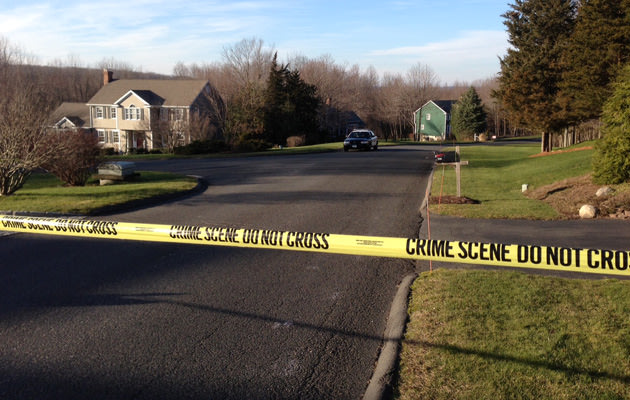TOKYO (AP) — Japanese voted Sunday in parliamentary elections that were expected to put the once-dominant conservatives back in power after a three-year break — and bring in a more nationalistic government amid tensions with big neighbor China.
Major newspapers were predicting the Liberal Democratic Party, led by the hawkish former Prime Minister Shinzo Abe, would win a majority of the seats in the 480-seat lower house of parliament, although surveys also showed that many voters remained undecided just days before the election.
Voters have soured on the ruling Democratic Party of Japan, which won a landslide victory in 2009 but could not deliver on a string of campaign pledges. They are also upset over Prime Minister Yoshihiko Noda's push to double the sales tax, a move he argues is necessary to meet rising social security costs as the nation rapidly grays.
Disillusionment with politics is running high in Japan, as is confusion over a hodgepodge of small, new parties that have sprung up in recent months espousing a variety of not always coherent policy views. One has a nationalistic image, while another is staunchly anti-nuclear, tapping into grass-roots opposition to atomic power in the wake of last year's disasters in Fukushima.
Toshiyuki Kataoka, a 67-year-old retiree from Chiba, east of Tokyo, said that the Democrats proved to be novices running the country. "It was someone driving on a learner's permit," he said. But he added that he's willing to support them again because he's worried about the nationalistic influence of the LDP.
"The LDP ruled for many years, and you can't expect the Democrats to fix everything in three years," he said. "Japan does seem to be turning to the right, and I don't want to be a part of that."
But not many Japanese were likely to be as forgiving as Kataoka.
With Japan stuck in a two-decade economic slump and pressured by an increasingly assertive China, voters may be turning back to the LDP, which guided the country for most of the post-World War II era, after taking a chance on the Democrats and being let down. The DPJ failed to carry out numerous promises, including cash handouts to families with children, eradicating wasteful spending and moving a controversial U.S. military base off of the southern island of Okinawa.
The country must also cope with an aging, shrinking population, a bulging national debt and intensifying competition from Asian neighbors such as South Korea, Taiwan and China, all of which have territorial disputes with Japan.
"This election is about punishing the DPJ," said Koichi Nakano, a political science professor at Sophia University, suggesting the LDP's appeal may be its "brand image" as the "perpetual, natural party in power."
"It seems to me that people are driven by nostalgia, as they seem to want to bring the LDP back to power because they lack better alternatives," he said.
One upstart party that is drawing a fair amount of interest and could be a part of a ruling coalition if the LDP doesn't get a majority is the populist, right-leaning Japan Restoration Party, led by two of the country's most outspoken politicians, Osaka Mayor Toru Hashimoto and former Tokyo Gov. Shintaro Ishihara, who at 80 is nearly twice Hashimoto's age. Both exhibit forceful — critics would say dictatorial — leadership styles. The party also wants to amend the constitution to elect the prime minister by popular vote and abolish the less powerful upper house of parliament, but is divided on nuclear power.
The brand new Tomorrow Party, led by a female governor, Yukiko Kada, wants to eliminate nuclear power plants within 10 years, opposes the tax hike and advocates more money for families. But its image has been tainted by linking up with former DPJ power broker Ichiro Ozawa, whom many Japanese voters don't trust.
If the LDP wins the most seats, the hawkish Abe would almost certainly get a second stab as prime minister. He would be Japan's seventh prime minister in about 6 1/2 years.
His previous tenure, a one-year stint in 2006-2007, was marked by a nationalistic agenda, pressing for more patriotic education and upgrading the defense agency to ministry status. Abe also said there was no proof Japan's military had coerced Chinese, Korean and other women into prostitution in military brothels during World War II. He later apologized but lately has suggested that a landmark 1993 apology for sex slavery may need revising.
During the campaign, Abe has taken a strong stand against China in an ongoing territorial dispute over some tiny, uninhabited islands in the East China Sea controlled by Japan but also claimed by China and Taiwan. The LDP platform calls developing fisheries and posting permanent staffing of public officials on the islands, called Senkaku in Japanese and Diaoyu in Chinese.
Beset with a host of domestic problems, Japan has been receding behind China as the region's most important economic player, and the promise of a strong, assertive country resonates with many voters, even if they are suspicious of doing that through military power.
"We want somebody who can be a tough diplomatic negotiator and who can take a strong leadership," Seishi Kobayashi, a company employee in his 40s who is wavering between voting for the LDP or the upstart Japan Restoration Party, said Saturday. "I still can't make up my mind. Plus, whoever you vote may team up with parties with totally different policies, so you have to be careful. In this country, the election is not really about policies. But this time around, we should make a sound choice, or we are going to suffer for 10, 20 years to come."
With so much turnover in Japan's leadership — one prime minister a year over the last six years — Kataoka, the retiree from Chiba, wonders if the public's expectations are too high.
"It seems like we're searching for a messiah," he said.











